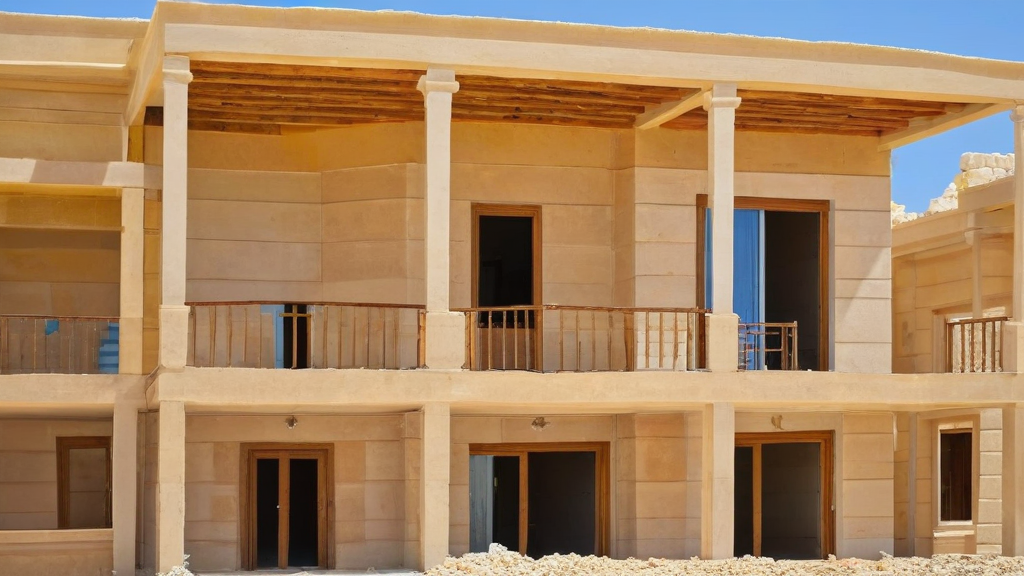Summary about owning and buying property in Hurghada, Egypt.
- Investing in property along the Red Sea coast can be a rewarding venture, offering unique opportunities for both residential and commercial growth.
- Before committing to any purchase, get to know the trends in the Red Sea coastal property market.
- Investing abroad or in a new market always involves a degree of legal complexity.
- Patience can pay off as infrastructure and tourism continue to develop in the region.
- Schedule an on-site visit to inspect the physical condition of the property and the surrounding environment.
Essential tips for investing in red sea coastal property
Investing in property along the Red Sea coast can be a rewarding venture, offering unique opportunities for both residential and commercial growth. The region’s stunning landscapes, booming tourism, and expanding infrastructure make coastal properties highly desirable. However, like any real estate investment, buying in this area requires careful planning and savvy decision-making to maximize returns and minimize risks.
Understand the local market dynamics
Before committing to any purchase, get to know the trends in the Red Sea coastal property market. Property prices here can vary widely depending on exact location, development plans, and nearby amenities. Research the recent sales history and current listings to gauge price fluctuations and identify undervalued areas.
Keep an eye on government initiatives as well. The Red Sea region benefits from large-scale development projects and luxury tourism ventures, which often boost property values. Awareness of these developments allows you to anticipate growth and spot promising investment pockets.
Consider the property’s accessibility and infrastructure
Well-connected locations tend to attract higher demand. Check the accessibility of the property by road, air, and sea transport. Proximity to airports, highways, and marinas can influence the ease with which visitors or residents reach the site.
Besides transport links, evaluate the availability of utilities like electricity, water supply, and internet services. Properties that are either already connected or have clear plans for such infrastructure updates provide a big advantage, ensuring quicker occupancy and higher rental potential.
Evaluate the legal and regulatory framework
Investing abroad or in a new market always involves a degree of legal complexity. The Red Sea region has specific laws regarding foreign ownership of property and land use. It’s critical to confirm the type of ownership allowed, whether freehold, leasehold, or other arrangements, and the process for transferring titles.
Working with a reputable local real estate attorney or consultant is crucial. They can help you navigate any regulations, avoid potential scams, and ensure all paperwork is properly handled. Understanding taxes on property purchase, holding costs, and capital gains is also essential to fully grasp the investment’s financial impact.
Assess the potential for rental income and capital appreciation
Many investors in coastal properties look for opportunities to generate rental income. Research the demand for vacation rentals or long-term leases in the area. Popular tourist spots along the Red Sea can offer strong seasonal occupancy rates and premium rental prices.
Check local rental regulations, including licensing requirements and any restrictions on short-term leases. These rules vary and may influence your ability to profit from holiday rentals or serviced apartments.
Beyond rental income, consider the property’s capital appreciation outlook. Properties close to upcoming resorts, entertainment hubs, or natural reserves tend to appreciate faster. Patience can pay off as infrastructure and tourism continue to develop in the region.
Inspect the property thoroughly
Don’t rely solely on photos or brochures. Schedule an on-site visit to inspect the physical condition of the property and the surrounding environment. Check for signs of damage, erosion, or other coastal-related issues that could impact the structure’s longevity.
Consider environmental factors such as flood risk, seawater corrosion, and accessibility during extreme weather conditions. These can affect insurance costs and future maintenance bills.
Leverage local expertise
Connecting with local real estate agents, property managers, and residents can provide valuable insights you won’t find online. Locals know subtle market shifts, neighborhood reputations, and upcoming projects well before they’re widely advertised.
Engage professionals who specialize in the Red Sea coastal region. Their guidance can streamline your search, help you negotiate better deals, and provide post-purchase support such as managing rentals or maintenance.
Plan your investment budget wisely
Factor in not only the initial property cost but also additional expenses like registration fees, taxes, maintenance, insurance, and possibly renovation or furnishing. Coastal properties often require more upkeep, so budget accordingly to keep your investment in top shape.
Also, consider the currency exchange implications if you’re investing as a foreign buyer. Fluctuations can impact your overall cost and returns.
Stay updated on regional development plans
Many Red Sea coastal areas are part of ambitious mega-development schemes aimed at boosting tourism and residential appeal. These projects can drastically transform local property values.
Follow local news, government announcements, and investment forums to stay informed about infrastructure upgrades, new resorts, or environmental protection measures. Such changes could either elevate your property’s worth or impose new restrictions.
By taking a thoughtful, informed approach to investing along the Red Sea coastline, you maximize your chances of acquiring a profitable and enjoyable property. Balancing market research, due diligence, and expert advice allows you to benefit from one of the most promising coastal real estate markets today.
Understanding market trends and legal considerations in red sea coastal real estate
Investing in Red Sea coastal property offers a unique opportunity to tap into a rapidly developing and culturally rich region. However, to make a sound investment, recognizing the current market dynamics and understanding the legal framework is essential. This knowledge helps you navigate risks and maximize the potential of your real estate venture.
Analyzing market trends in red sea coastal property
The Red Sea region has seen increasing attention from both domestic and international investors. This surge is driven by government-backed development projects, tourism growth, and a strategic location connecting Africa, the Middle East, and Asia. But how do you interpret these market trends effectively?
Economic growth and infrastructure development
One of the strongest drivers of real estate appreciation along the Red Sea coast is the significant investment in infrastructure. Ports, airports, and luxury resorts are being expanded and newly developed, which significantly boosts the value of surrounding properties. When considering where to invest, look for areas benefiting from major government-funded projects, as these tend to offer higher returns over time.
Tourism as a catalyst
The Red Sea’s unparalleled natural beauty, coral reefs, and historical sites make it a hotspot for tourism. This attracts a steady flow of visitors, increasing demand for rental properties, hotels, and vacation homes. Monitoring tourism statistics and seasonal peaks can help you time your purchase and decide on the best type of property to invest in, whether it’s a rental villa, hotel, or commercial space serving tourists.
Foreign investment and market demand
As more foreign buyers enter the market, competition has increased, leading to faster property price appreciation. Pay attention to policies affecting foreign ownership and investment restrictions, as these can shift demand quickly. Analyzing where foreign investors focus their funds can provide insights into high-potential neighborhoods or developments.
Essential legal considerations for buyers
Red Sea coastal real estate investment comes with a complex legal environment that varies by country and specific location. Ensuring you comply with local rules will protect your investment and prevent future disputes.
Ownership rights and restrictions
You must verify who can legally own property in the area you are interested in. Some countries limit foreign ownership to certain zones or property types, while others may restrict ownership to leasehold arrangements instead of freehold. Investigate the length of leases and your rights under them, as these can affect your long-term planning and resale options.
Permits and approvals
The purchase process might require various permits, including building permits, environmental clearances, and zoning approvals. Understanding the approval process will help you estimate timelines and avoid legal issues that could delay construction or habitation.
Tax implications
Be aware of tax liabilities such as property taxes, capital gains tax, and inheritance tax in the region. Knowing these costs upfront ensures your investment remains financially viable and helps you plan for ongoing expenses.
Due diligence and title verification
Carry out thorough due diligence on the property title to confirm ownership and check for any liens or encumbrances. Hiring a local real estate lawyer or a reputable agency can safeguard your interests during the transaction process and after acquisition.
Practical tips for navigating the market and legal framework
- Stay Informed: Regularly review market reports, property listings, and government announcements related to the Red Sea coastal region.
- Leverage Local Expertise: Work with local real estate agents, legal experts, and consultants who understand the nuanced rules and can provide valuable advice.
- Understand Cultural Contexts: Respect local customs and traditions, especially when buying property near sensitive ecological or heritage sites.
- Plan for Long-Term: Consider the long-term potential and sustainability of your investment rather than short-term gains.
- Check Infrastructure Plans: Investigate upcoming infrastructure projects that can boost property values, such as new highways, power plants, or international airports.
- Review Contract Terms Carefully: Scrutinize legal documents, payment schedules, and developer reputations before signing agreements.
Investing in Red Sea coastal property can be highly rewarding when approached with careful attention to market trends and legal requirements. By doing your research, seeking expert guidance, and understanding the rules, you position yourself to enjoy both financial growth and the unparalleled beauty of this fascinating region.
Investing in Red Sea coastal property offers exciting opportunities, especially when you approach it with the right knowledge and strategy. By following essential tips such as researching locations carefully, assessing property values, and understanding the local development plans, you set yourself up for a smarter investment. The unique beauty and growing appeal of the Red Sea coastline make it a standout choice for both personal enjoyment and long-term financial growth.
Equally important is a clear understanding of the current market trends and legal landscape. Staying informed about property demand, price movements, and upcoming infrastructure projects helps you time your investment wisely. Meanwhile, carefully navigating legal requirements,from ownership rights to permits,ensures your investment remains secure and hassle-free. Working with local experts and legal advisors can provide the confidence you need to avoid pitfalls.
Ultimately, combining thorough market knowledge with practical investment tips empowers you to make decisions that benefit your financial goals and lifestyle preferences. Whether you’re buying for vacation use, rental income, or future resale, investing in Red Sea coastal real estate can be a rewarding venture. Keep these insights in mind, stay proactive, and you’ll be well-positioned to enjoy the many advantages this prime region has to offer.










